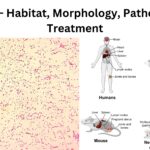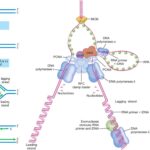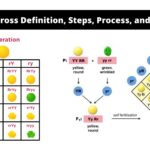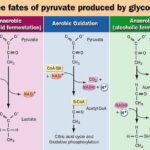Multicellular organisms have division of labour. Explain.
Multicellular organisms have division of labour. Explain.
Please login to submit an answer.
Division of labour describes how multicellular organisms allocate distinct functions to different groups of cells rather than having every cell perform every task
this specialization enables tissues and organs to carry out complex processes more efficiently
the regulatory mechanisms underpinning this process existed in unicellular ancestors and were co-opted during the evolution of multicellularity
Cell differentiation underlies division of labour through selective gene expression and cell–cell signaling
transcription factors and chromatin remodeling determine which genes are active in a given cell type
signaling pathways such as Notch, Wnt and growth factors guide cells along specific developmental pathways
Hierarchical organization of specialized cells supports coordinated bodily functions
cells with similar structure and function form tissues
tissues integrate into organs that perform defined physiological roles
organs are arranged into organ systems carrying out life-sustaining processes
Efficiency and performance improve through task segregation
specialized cells can produce large quantities of proteins or metabolites required for their unique roles
energy and resources are allocated optimally, reducing waste and enhancing overall organismal fitness
metabolic “dirty work” such as reactive oxygen species generation is confined to somatic cells, protecting germ cells from damage
Functional complexity and adaptability increase with specialization
complex organ systems (nervous, circulatory, respiratory) arise only when cells adopt distinct morphologies and biochemical pathways
adaptive responses to environmental changes are faster when dedicated sensor and effector cells interact
example in bacteria shows biofilm formation where some cells adhere and produce matrix while others specialize in nutrient uptake
Division of labour enhances survival in diverse environments
organisms can exploit a wider range of ecological niches by evolving cell types tailored to specific tasks (e.g., root cells absorb water, leaf cells perform photosynthesis)
coordinated defense mechanisms emerge, such as immune cells targeting pathogens while barrier tissues prevent entry
Evolutionary significance of division of labour in multicellularity
germ-soma differentiation represents a major transition, separating reproductive and somatic functions to improve lineage integrity
cooperative interactions among cells laid the foundation for increasing organismal complexity and the Cambrian diversification of life
Real-world examples illustrating division of labour
red blood cells transport oxygen while white blood cells defend against pathogens
neurons conduct electrical signals and glial cells support and nourish neural networks
pancreatic β-cells secrete insulin to regulate blood glucose, whereas α-cells secrete glucagon to raise glucose levels
In summary division of labour in multicellular organisms
streamlines physiological processes through specialization
relies on intricate genetic and signaling networks to produce diverse cell types
drives evolutionary innovation by enabling complex structures and functions to emerge
- Share on Facebook
- Share on Twitter
- Share on LinkedIn
Helpful: 0%




